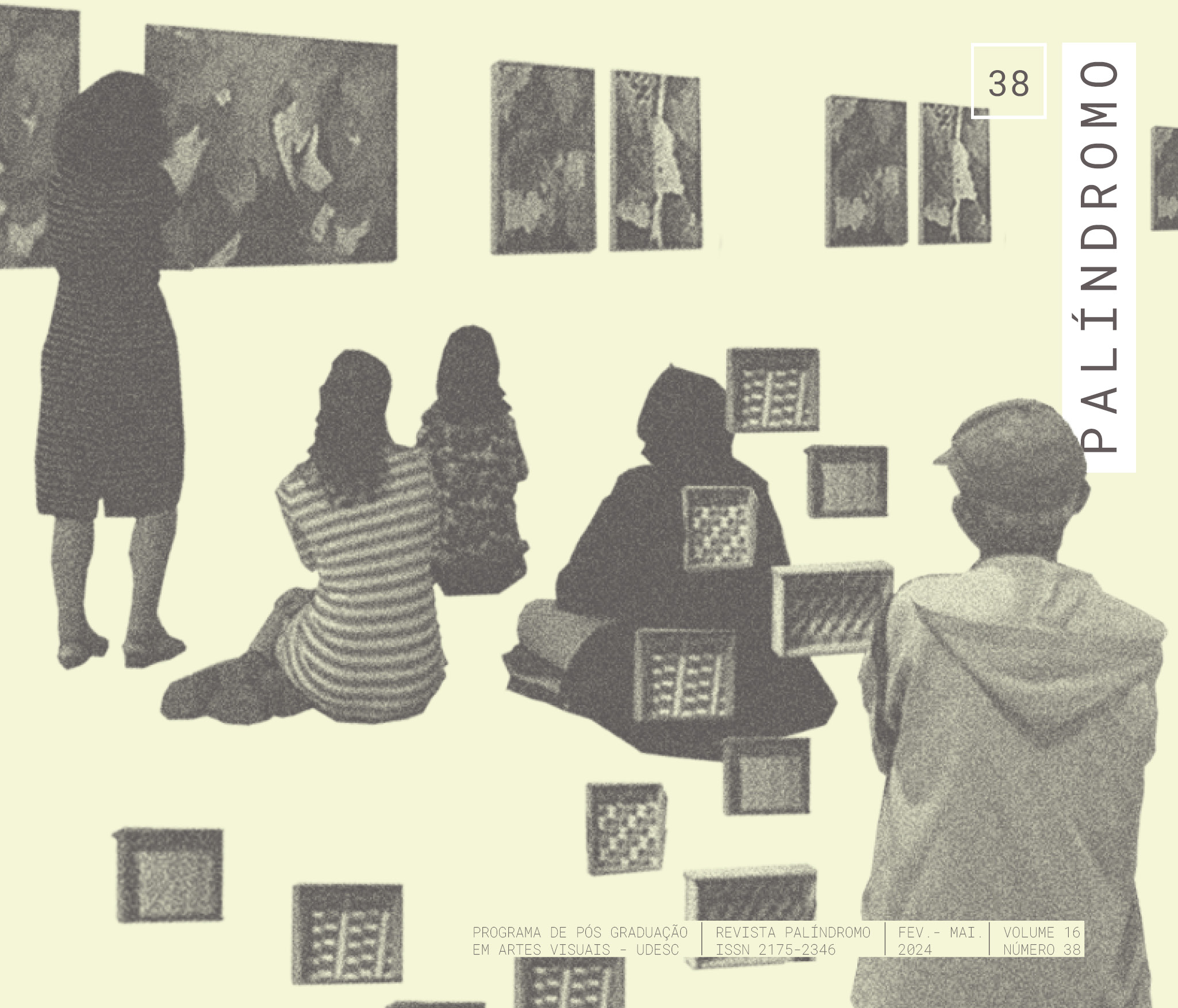Como analisar uma exposição de design?: abordagem semiótica
DOI:
https://doi.org/10.5965/2175234616382024e0010Parole chiave:
objetos de design, exposições de design, instituições culturais, semiótica discursiva, linguagensAbstract
Os objetos e soluções resultantes de projetos de design são muitas vezes desenvolvidos para passarem despercebidos pelos usuários, entrelaçados silenciosamente às práticas de vida cotidianas. Entretanto, em uma exposição de design, os produtos dessa atividade projetual são necessariamente postos em evidência. Em tais situações, para poder apreciar a proposta expositiva em jogo, que abordagem poderíamos adotar para analisar ou “ler” as linguagens em exibição? Recorremos, neste trabalho, aos fundamentos da Semiótica Discursiva, incluindo seus desdobramentos na Sociossemiótica, na Semiótica Plástica e nos estudos da estesia. Nosso objetivo é fazer uma retomada das principais contribuições semióticas dadas ao estudo de museus e de exposições de arte, visando avaliar se (e como) esse ferramental teórico-metodológico pode servir de alicerce para a análise de exposições de design. Como resultado, propomos um percurso analítico estruturado em quatro dimensões de leitura sucessivas e hierarquizadas – objeto, exposição, instituição cultural, território –, destacando a cada patamar o que há de específico no caso de projetos de design, e que, portanto, deve ser levado em conta quando tratamos da análise de uma exposição de design.
Downloads
Riferimenti bibliografici
BUORO, A. B. et al. Dinâmicas sociais nos territórios de culturas de São Paulo. Caderno de Discussão do Centro de Pesquisas Sociossemióticas, São Paulo, n. 19, dez. 2013.
BUORO, A. B. et al. “Relações contratuais e relações polêmicas nos territórios de cultura”. In: OLIVEIRA, A. C. (Org.). São Paulo público & privado: abordagem sociossemiótica. São Paulo: Estação das Letras e Cores e CPS Editora, 2014, p. 133-150.
FLOCH, Jean-Marie. Petites mythologies de l’œil et de l’esprit: pour une sémiotique plastique. Paris-Amsterdã: Hadès-Benjamins, 1985.
FLOCH, Jean-Marie. Identités Visuelles. Paris: PUF, 1995.
GREIMAS, A. J. Sémantique structurale. Paris: Larousse, 1966.
GREIMAS, A. J. Du sens. Paris: Seuil, 1970.
GREIMAS, A. J. Du Sens II. Paris: Seuil, 1983.
GREIMAS, Algirdas Julien; COURTÉS, Joseph. Dicionário de Semiótica. Tradução Alceu Dias Lima et al. São Paulo: Cultrix, 1983.
HAMMAD, Mannar. “Il Museo della Centrale Montemartini”. In: PEZINI, Isabella; CERVELLI, Pierluigi (Orgs.). Scene del consumo: dallo shopping al museo. Roma: Meltemi, 2006, p. 203-280.
LANDOWSKI, Eric. O olhar comprometido. Tradução Ana Claudia de Oliveira e Marcia da Vinci de Moraes. Revisão do autor. Galáxia, São Paulo, n. 2, 2001.
LEON, Ethel. IAC: primeira escola de design do Brasil. São Paulo: Blucher, 2014.
OLIVEIRA, Ana Claudia de. Estesia e experiência do sentido. CASA – Cadernos de Semiótica Aplicada, v. 8, n. 2, 2010.
OLIVEIRA, Ana Claudia de. “Sentidos e qualidades sensíveis – plásticas, rítmicas, estésicas”. In: OLIVEIRA, Ana Claudia de (Org.). Sociossemiótica II: sentido, estesia, gosto. Barueri, SP: Estação das Letras e Cores, 2021, p. 119-149.
PEZZINI, Isabella. Semiotica dei nuovi musei. Bari-Roma: Laterza, 2011.
PEZZINI, Isabella. “Modelli semiotici per lo studio del museo”. In: MARSCIANI, Francesco (Org.). Un etnosemiologo nel museo. Bolonha: Esculápio, 2021, p. 115-134.
PIRANI, Federica. Che cos’è una mostra d’arte. Roma: Carocci, 2010.
VERCELLONI, Matteo. Breve storia del design italiano: nuova edizione. 2. Ed. Roma: Carocci, 2014.
ZUNZUNEGUI, Santos. Metamorfosi dello sguardo: museo e semiotica. Tradução ao italiano de Luisa Scalabroni. Roma: Nuova Cultura, 2011.
Downloads
Pubblicato
Come citare
Fascicolo
Sezione
Licenza
Copyright (c) 2024 Marc Barreto Bogo

TQuesto lavoro è fornito con la licenza Creative Commons Attribuzione 4.0 Internazionale.
DECLARAÇÃO DE DIREITOS AUTORAIS
a. Os artigos publicados pela revista são de uso gratuito, destinados a aplicações acadêmicas e não comerciais. Todos os direitos autorais são atribuídos à revista. Os artigos cujos autores são identificados representam a expressão do ponto de vista de seus autores e não a posição oficial da Revista Palíndromo. O (s) autor (es) compromete-se sempre que publicar material referente ao artigo publicado no Palíndromo mencionar esta publicação da seguinte forma:
Este artigo foi publicado originalmente pela revista Palíndromo em seu volume (coloque o volume), número (coloque o número) no ano de (coloque o ano) e pode ser acessado em: http://www.revistas.udesc.br/index.php/palindromo
b. Plágio, em todas as suas formas, constitui um comportamento antiético de publicação e é inaceitável. A revista Palíndromo utiliza o software iThenticate de controle de similaridade


